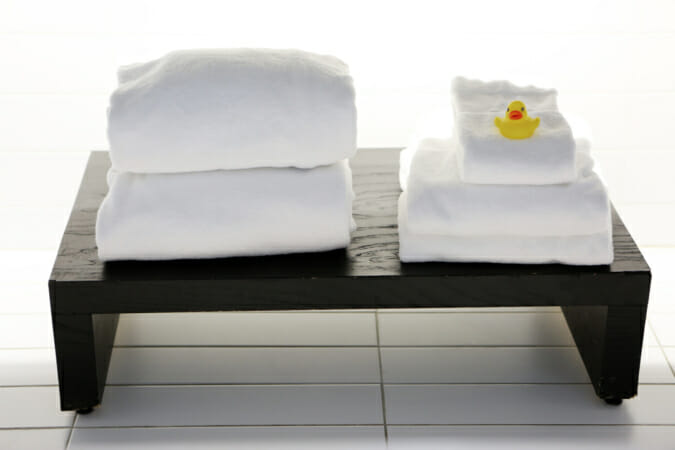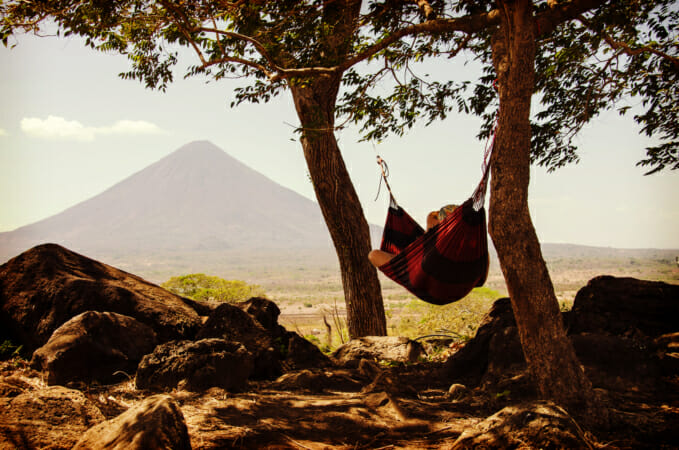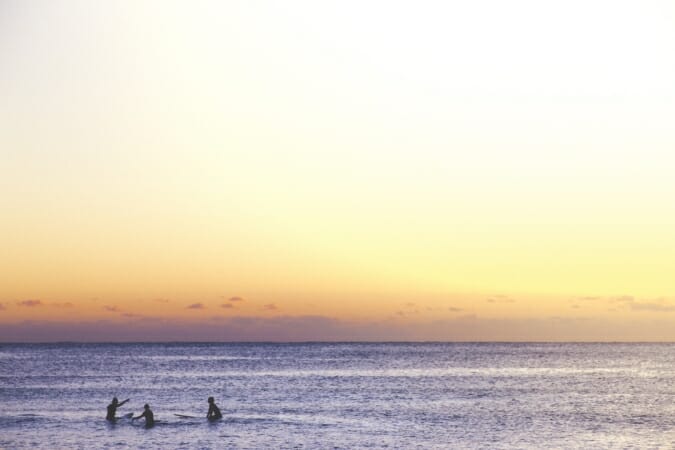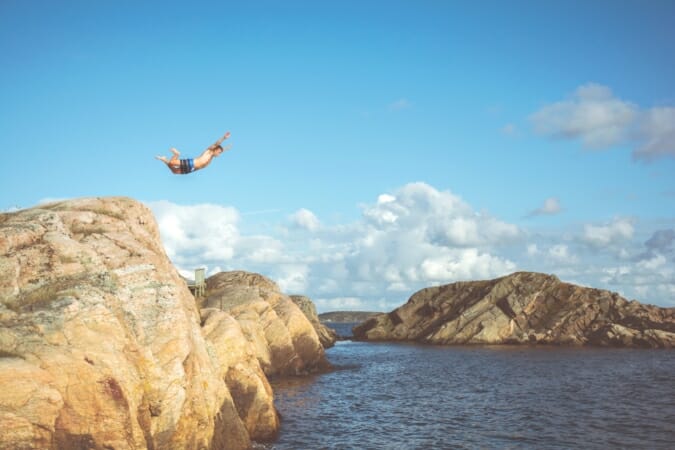Gap in the Market Volume 2 - Wellness Travel

Each week we’re going to be digging deeper into a different travel industry sector, with a view to both inspiring and informing new startups in the business. Today we’re taking a closer look at the world of wellness, a travel trend that has grown rapidly in recent years. As people have started to grow more conscious of how they eat and exercise, the importance of relaxation, and the ramifications of high stress levels, wellness tourism has gone from strength to strength. Let’s try and understand the why, the how, and what’s in store for the future in this sector…
What is Wellness Travel?
What constitutes wellness travel is pretty subjective, and when you think about it, it’s easy to understand why. What’s good for one person might not be so good for another. Despite this, we can broadly define wellness travel as travel with a focus on improving wellbeing. How exactly wellbeing is improved depends on the provider, but trips can range from anything to spa breaks and meditation weekends to healthy eating retreats and even surf camps.
All of these health-focused trips may sound like a New Age fad, but in reality people have been going on health-driven vacations for hundreds of years. There’s not much difference between the ancient Romans traveling to mineral baths and the spa hunters of today.
Unlike most other sectors within the travel industry, wellness tourism is malleable. This means that providers can really get creative with their offerings and stand out from the crowd. As long as there’s a hint of vitality and the promise of some tangible benefit, agencies are on to a winner.
The Global Wellness Institute (Yes, it really does exist!) (GWI) defines wellness tourism as “all travel associated with the pursuit of maintaining or enhancing one’s personal well-being, whether physical, mental, environmental or spiritual.”
Clearly, this is a definition designed to be as accommodating as possible, and is applicable to many kinds of travel.
Why is Wellness Travel so Popular?
When you think about the motivation for any holiday, the desired end result is nearly always the same. You want to arrive back home feeling happier than you did when you left. If you can feel refreshed and reinvigorated too, that’s all the better. As that’s been the main motivation for trips for hundreds of years, really honing in on that idea is what good wellness providers do.

What’s making wellness travel so popular is that these fundamental desires have always been key to any holiday. It’s just that now we’re realising we can take it to another level. As soon as travel agents saw that there was a market for trips dedicated to health and wellbeing, things started to take off.
Now, elements of wellness can be added in to all kinds of holidays, from your traditional spa to adventurous, active trips. The result is a travel sector as mainstream a niche as you could think of.
So what can we take from this? Well, part of the appeal of wellness is that it’s appealing to all. Whatever your reason for taking a vacation, it’s likely that you want to stop the clock, to get away from it all. Getting closer to this kind of serenity is only going to become more vital as our lives continue to become more complex and stressful.
What’s in Store for the Future of Wellness Travel?
In a nutshell, growth. These days, wellness tourism is a nearly 0-billion-a-year industry, and it’s estimated to grow to 0 billion by 2017.
Wellness travel is one of the fastest growing — if not the fastest growing — tourism categories today” - Beth McGroarty, research director at the Global Wellness Institute.
Some Ideas for You
In Spafinder Wellness 365’s annual report on the state of the Spa and Wellness market, they predicted five separate trends breaking through this year. We thought it would be a good idea to go through them individually and give you some inspiration for potential wellness marketplaces. These trends are:
Surfing
Surfing has long been seen as a sport for beach bums and rebels but, believe it or not, it’s becoming the latest escape for a generation of hippies seeking wellness, relaxation and a touch of outdoor adventure. With this new trend in mind, providers are starting to realise that surf camps could do with some upgrading to accommodate for a new market. It turns out there are ways to better capture that sense of wellbeing without losing the cool, tranquil vibes that make surf caps so popular.

On top of this new take on a hip watersport, surfing is now appealing to a wider range of demographics than ever before. Women, families and even luxury travellers are finding providers willing to cater to their needs. This is one trend that has been predicted to continue through 2016 and beyond.
What is driving surfing as a viable wellness option?
- Retreats that blend surfing and surf classes with yoga. Yoga has long been used by surfers to improve breathing capacity, strength and balance – all key for when you’re riding waves.
- A bunch of new surf + wellness providers are sprouting up across all range of prices. These range from the traditional, unpretentious beach-bummery, to luxury surf breaks far beyond the beach camps of years gone by.
- A new way of looking at things: Welcoming, all-female surf retreats and schools
- An awareness is building around the notion that surfing is a powerful mind-body exercise combination. People are starting to respect it as a high intensity, low-impact workout. This is being perpetuated by fitness brands such as Surfset.
Extreme Adventure
We’re the first to admit that this trend is actually a travel sector in its own right. We’ll probably even feature it separately further down the line. But you can’t argue with the fact that providers are starting to realise there’s a big market for the combination of wellness and adventure.
It seems that the idea is that you do something so adventurous and extraordinary that your brain has a kind of reset. If you blow your mind it has to reboot, and in a way, that’s the very definition of what wellness travel tries to achieve.

Now we’ve heard before of wellness camps and spa weekends, which might include a bit of gentle hiking or mountaineering. But this new wave of thrill-seeking yet mentally pampering trip offers two doses of opposite extremes.
Quoted in the Spafinder Wellness 365’s annual report, Amy McDonald, CEO of Under A Tree Consulting (who develops innovative programs and treatments for global spa/wellness properties) described the shifts now underway in the wellness industry. She said, ”The traditional spa resort experience, which was typically delivered by a therapist in a treatment room, is now being completely turned upside down. The focus now is on out-of-the-box outdoor fitness and adventure experiences and events (because life-changing shifts happen there). And traditional spa plays more of a support and recovery role.”
And there’s science behind the adventure/pamper combination too.
We’re talking about a true chemically-altered state: a synesthesia, or union of the senses” - Dr. Kenneth Pelletier, Clinical Professor of Medicine at the University of California
In the same report, Dr. Kenneth Pelletier, Clinical Professor of Medicine at the University of California, explains that stress can be either “good” or “bad”. In the situation when a person voluntarily chooses to do something stressful, such as a bungee-jump, it’s the good kind of stress. It snaps us out of our worrying heads and requires total focus. The ensuing adrenaline rush is one profound physiological response. It increases blood flow and diverts blood away from the brain to the muscles. In effect, the brain is quieted. That good kind of stress also triggers the release of endorphin, serotonin, and dopamine, so we experience a kind of euphoria. As he said, “We’re talking about a true chemically-altered state: a synesthesia, or union of the senses”.
Cruising on an Ocean of Wellness
Cruise ship holidays are a favourite for many who love to holiday in luxury and have all of the travel taken care of. Relax in your room during transit, enjoy the on-board entertainment and generally take the holiday experience with you wherever you go. That’s what cruising is all about. But slowly the tide is beginning to turn on traditional conceptions of cruising. People want more, and wellness providers are starting to offer it…
So a spa on a cruise ship isn’t necessarily anything ground-breaking. But the floating hotels of the future will offer some of the most impressive spa and wellness facilities available in the world. There will be entire ships dedicated to providing breath-taking spa getaways out at sea.
There has been a steady consumer rise in cruise travelling. This, combined with the increase in wellness travel and the huge investment going into building new cruise ships and opening new shipping lanes, means that this sector is only going one way. Up. (And out to sea).
When travel agents were asked which types of wellness travel properties were most appealing to their average client, they reported that a “health” cruise (with spa, fitness, yoga, etc.) was ranked in the top 10, along with categories like luxury spa resort, beach-focused property, and authentic yoga retreat.” - Spafinder Wellness 365’s 2015 State of Wellness Travel
Inspired? Interested in setting up a marketplace? That’s where we come in…
As we have seen, wellness travel is a great area to consider, but there are plenty of other opportunities out there too. Here at Travelshift we develop powerful software solutions to help new startups take the travel industry by storm. Our platform has already been a huge success providing travel services in Iceland, and now we want to help you set up in whatever travel niche takes your fancy.
All you have to do is aggregate the suppliers; Travelshift software takes care of the rest. From built-in SEO to content marketing features, tools that allow reviews and testimonials and a community blogging platform, with our help you can build a reputable marketplace in weeks and start selling in no time at all.